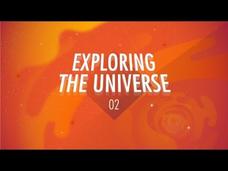AFP News Agency
CLEAN: Models heat up catwalk at PakistanÕs latest Fashion Week
CLEAN: Models heat up catwalk at PakistanÕs latest Fashion Week
AFP News Agency
VOICED: Detroit hails resurgence of US auto industry
VOICED: Detroit hails resurgence of US auto industry
Curated Video
Clashes at Tomb of the Unknown Soldier in Paris
Demonstrators protesting against rising taxes clashed with police around the Tomb of the Unknown Soldier in Paris on Saturday.
Press Association
'Driverless' bus takes to the road at business park in Oxfordshire
The UK's first all-electric 'driveless' passenger bus has taken to public roads at a business park in Oxfordshire.
The Mellor Orion E autonomous bus features a suite of sensors from Fusion Processing Ltd that allow it to drive on public...
Press Association
UK’s first self-driving electric bus unveiled
The UK's first all-electric 'driveless' passenger bus has taken to public roads at a business park in Oxfordshire.
The Mellor Orion E autonomous bus features a suite of sensors from Fusion Processing Ltd that allow it to drive on public...
Bloomberg
US Will Eventually Ban Russian Uranium Imports
Former US Energy Secretary Ernest Moniz says the US will "eventually" ban the import of Russian uranium and enriched reactor fuel. Speaking with David Westin on "Balance of Power," Moniz also discusses the global transition from fossil...
Curated Video
Why Is There New Interest In Fusion Energy?
A company by the name of Zap Energy is trying to find a way to develop more energy output from fusion reactions.
Crash Course
Exploring the Universe: Crash Course Big History #2
According to Carl Sagan, we are all made of star particles. The second video in a series of 16 explains what happened after the big bang. It discusses cosmic background radiation, chemistry, galaxies, heavy elements, and the creation of...
Crash Course
Nuclear Chemistry Part 2: Fusion and Fission
Go into depth with an investigation of fusion and fission area, how they work, the pros and cons and the many dangers of these reactions. The video also covers e = mc^2 and mass defects.
Curated OER
Fission And Fusion
Here is a high-quality presentation of how forces hold atoms together, but can be unstable in larger atoms. Fission and fusion are explained with colorful animated graphics and energy graphs. Explanations are elaborate, making this...
SciShow
Why Are the Inner and Outer Planets Different?
How did the planets form? An interesting video from the SciShow Space series identifies the differences between the inner and outer planets and how the history of the solar system's sun put everything in its place. Viewers also learn...
Bozeman Science
PS1C—Nuclear Processes
Need some strategies for teaching nuclear processes that are sure to cause an explosion of learning in your classroom? Get all the essential background knowledge, plus tips for getting your point across in a thoughtful...
FuseSchool
Culturing Microorganisms Part 1
An informative video explains how to culture microorganisms such as bacteria in a petri dish as part of the Fuse School playlist. It focuses on the need for nutrients and a proper temperature, which varies based on the location and...
Kurzgesagt – In a Nutshell
Atoms As Big As Mountains—Neutron Stars Explained
What is the densest object in the universe? Neutron stars claim many unique properties—including the title of densest object—that are extreme, even for our universe. The video explains how neutron stars form and why it is important for...
Kurzgesagt – In a Nutshell
Fusion Power Explained—Future or Failure
A day without fusion is like a day without sunshine. The video explains what fusion is and how we might be able to create the energy on Earth rather than relying on the sun. It highlights the pros and cons of fusion power.
Teacher's Pet
Fission and Fusion
Harness that classroom energy to study fission and fusion. An interesting video lesson first explains the process of fission and fusion and then discusses practical uses. The instructor explains in detail the reactions in nuclear...
MinuteEarth
The Faint Young Sun Paradox!
Does the sun have a life cycle? The video explains the confusion of what scientists expect and what the history of the earth proves. Then it offers multiple theories about the discrepancy and details the most accepted theory.
Veritasium
Where Did The Earth Come From?
What are we made of and where did all of this stuff come from? From the Big Bang to star dust, the narrator of an entertaining video explores many different theories. Scholars learn the sequence of events that had to occur to create the...
Crash Course
Brown Dwarfs
Not quite a star, not quite a planet ... what are brown dwarfs? Young astronomers learn the peculiarities of these heavenly bodies through a short video. The narrator explains the characteristics of brown dwarfs and the different types....
Crash Course
Neutron Stars
This is one heavy video! Introduce the topic of neutron stars with a brief but informative resource. Young astronomers discover the history of neutron star research, the conditions present in and around a neutron star, and the...
Crash Course
High Mass Stars
It's better to burn out than fade away! Viewers experience the birth of neutron stars and supernovae in a video that explains the life cycle of high mass stars. Learners see the conditions needed to produce these events, as well as...














